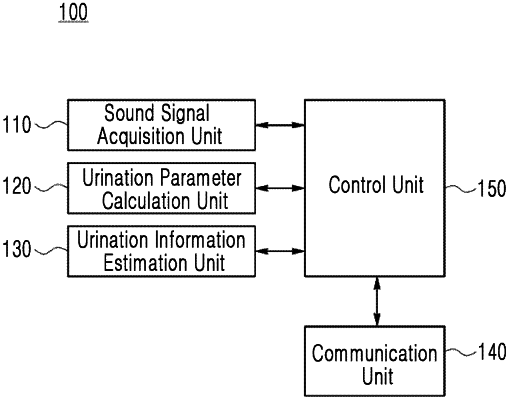| CPC A61B 5/208 (2013.01) [A61B 5/11 (2013.01); G10L 25/66 (2013.01)] | 6 Claims |

|
1. A method for calculating urination information, the method comprising
placing a mobile device in a predetermined location adjacent a toilet bowl, where the location is one of upon a body of a user or on a specified surface proximate the user's body and proximate the toilet bowl;
receiving data including a sound signal and a motion signal, recorded by a mobile device at least during urination of the user into the toilet bowl;
wherein an amount of sound signal that is received is based on a duration value preprogrammed into the mobile device;
wherein the mobile device of the user is a smartphone, the smartphone including a microphone and acceleration sensor;
determining a sex of the user based on a determined frequency of the sound signal;
selecting a urine flow rate prediction model corresponding to the determined sex;
generating first segmented signals out of the sound signal according to a time domain from the sound signal;
obtaining period information indicating whether each of the first segmented signals corresponds to the urination or not by using first parameters derived from the first segmented signals;
generating second segmented signals out of the sound signal according to the time domain from the sound signal;
filtering a noise of the second segmented signals on the basis of the period information, wherein filtered second segmented signals include values in frequency domain;
wherein the filtering also utilizes the acquired motion signal from the mobile device;
obtaining information of a urine flow rate, a urination start point, a urination end point, and a total voided urine volume by using second parameters derived from each of the filtered second segmented signals and the selected urine flow rate prediction model;
and displaying on a display of the smartphone the urine flow rate information, the urination start point information, the urination end point information, and the total voided urine volume information.
|